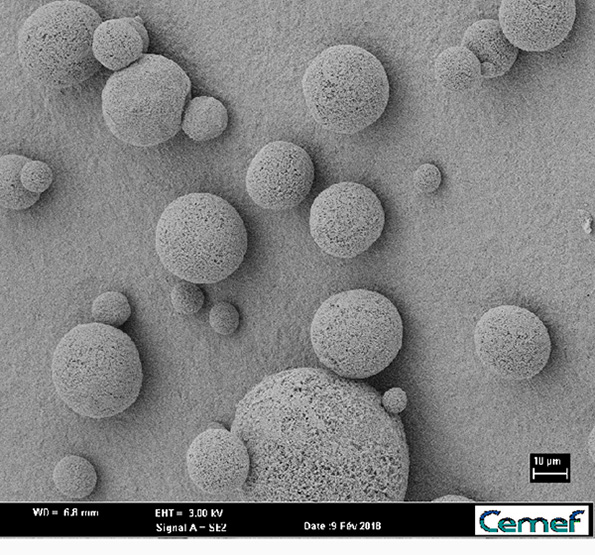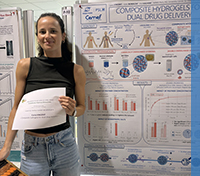Great future for biobased aerogels
24 April 2019

New exciting results on biobased aerogels (bio-aerogels) were obtained in the group of Tatiana Budtova. Fifteen years of research in this area resulted in breakthrough advancements.
To better understand the story, let us go back few years ago.
An European project Nanohybrids « New generation of nanoporous organic and hybrid aerogels for industrial applications: from the lab to pilot scale production » started at the end of 2015. CEMEF is involved in this project due to the previous results in the development of cellulose aerogels. The project is coordinated by Hamburg University of Technology. The objective is to make aerogels in the shape of beads of various sizes for different industrial applications. One of the requests is to make aerogels of very small size, below 30 microns.
Lucile Druel started her PhD thesis in the frame of this project, supervised by Tatiana. The scientific literature on this topic was practically non-existent. They tried to reproduce the published results but without success. However, they managed to develop a new approach and obtained aerogel beads of 20 microns in diameter.
This was the first success.
Tatiana explains: « Now our method is reliable and reproducible. It is a result of a fruitful collaboration with colleagues from Hamburg University of Technology. This is a great advantage of common research projects.”
Our story could stop here …. But research continues. In fact, to make aerogels a special drying, in supercritical conditions, is needed. This is to remove the solvent from the gel and preserve its porosity and nanostructure, which results in exceptional properties of aerogels: very low density, high adsorption capacity and insulation properties.
Drying in supercritical conditions is expensive. To make a bio-aerogel without such drying and preserve the nanostructure is a serious challenge.
« We were working following our intuition, but it is based on a long-lasting expertise in cellulose aerogels” said Tatiana.
They were advancing via trials and errors and finally found the way to preserve the properties of cellulose aerogels just drying at low vacuum (called xerogels), avoiding supercritical drying. This technique allows making cellulose aerogel-like monoliths and beads. It will greatly decrease the price of the material and thus open new prospects in the applications of new cellulose xerogels.
A patent was filed.
Tatiana Budtova is a leader of BIO group in CEMEF. She is working on bio-aerogels since 2004 and supervised five PhD theses on this topic.
Lucile Druel will defend her PhD thesis "Cellulose based aerogels: properties and shaping as beads" on May 10th, 2019.










